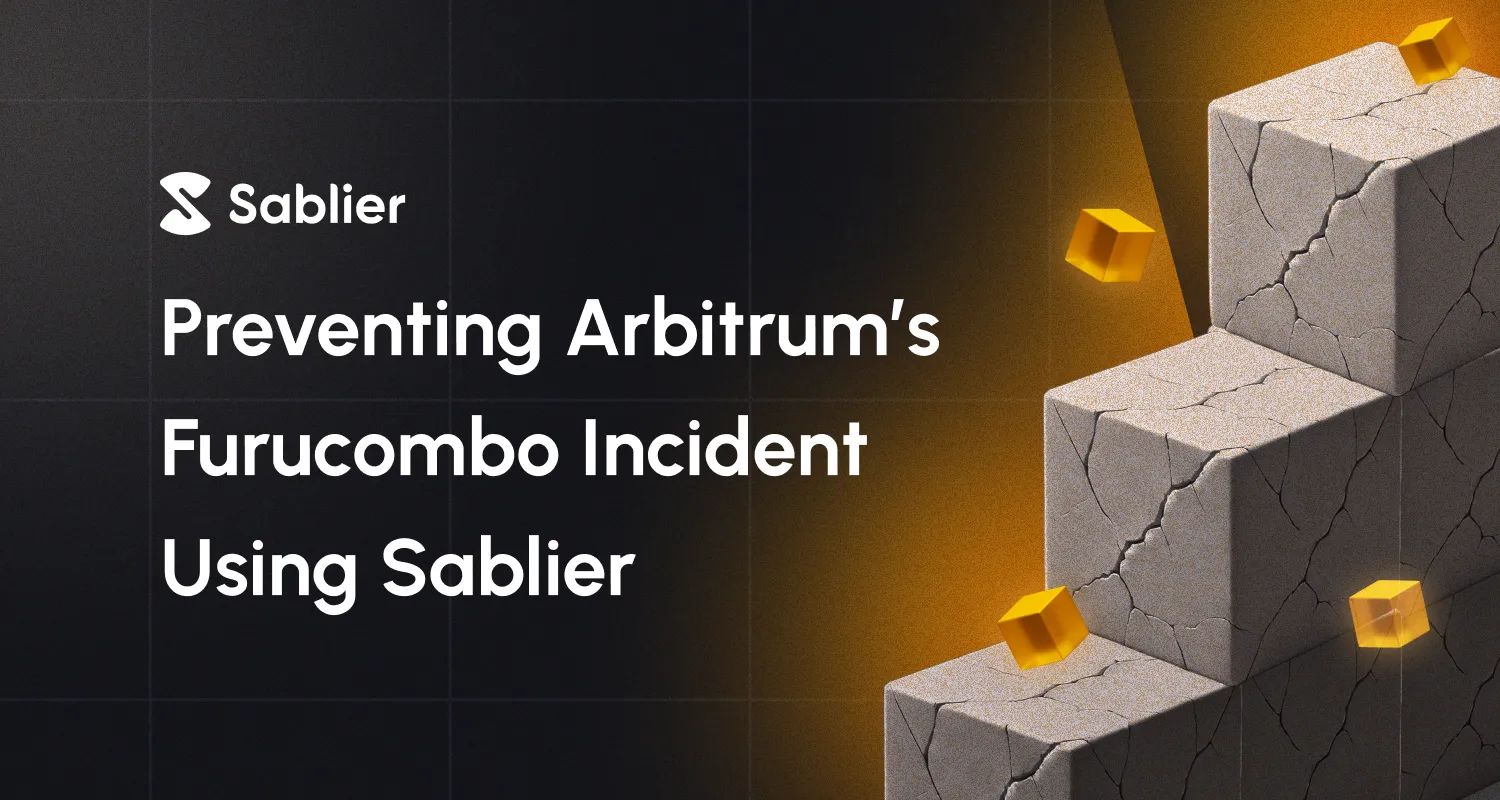Preventing Arbitrum’s Furucombo Incident Using Sablier
Token streaming is an ideal fit for grants, and could have prevented the Arbitrum DAO from losing 59.5K ARB tokens.

Earlier this summer, the Arbitrum Foundation observed that some of the grants they had offered were being misused by grantees. Naturally, they reached out to the projects in question and asked them to return the granted funds. This is a first point of friction, as having to ask for refunds is not an ideal situation and can lead to conflict, frustration, etc.
The second point of friction occurred when Furucombo, one of the grantees that had apparently misused their Arbitrum grant, didn’t return the funds. They even sent the whole grant they had received to a centralized exchange, Kraken.
Then, they notified Arbitrum that the funds would be returned, but didn’t actually do it, until they were publicly forced to after a post on the Arbitrum forum. The result? They were banned from any future grants from the Arbitrum DAO.
The question is, how could we have prevented this?
Streaming grants
The idea behind streaming is simple: I send you 100 USDC over a month, and every second of it, every single second, you will receive a fraction of the 100 USDC. Every second, there are new fractions of those 100 USDC flowing in. At the end of the month, it adds up to 100 USDC. In essence, Sablier allows you to pay individuals or entities in real-time. Just like you can stream movies on Netflix, or songs on Spotify, you can stream money using Sablier.
There are many use cases for streaming as a technology, the most popular ones being vesting, airdrops, payroll and grants, at the moment. Grants are a particularly interesting use case, as the dynamics of token streaming introduce a bilateral trustless relationship.
Let’s imagine you have a grant program and you stream a grant as part of it to Bob, your first grantee. Bob knows that he is now paid in real-time. If he walks away during the agreed upon project submission timeline, you will notice it, and can simply stop the stream and get the funds back which haven’t yet been paid out at that specific time.
So if the grant has a 40-day duration, and Bob walks away after 30 days, you will get 25% (or 10 days worth of funds) of the funds back. But that’s not the only advantage, as on Bob’s side, he knows that if you stop paying him, he can just stop working and will have been paid for the time he worked.
Both grantees and grantors win here. The grantor has improved assurances that the grantee will deliver the promised work, and can get the unpaid funds back if they notice any problem. The grantee is getting paid for the work they do and doesn’t have to trust the grantor to pay out the funds, as they are paid directly while the grantee does the work.
Improved transparency
But the dynamic nature of streaming isn’t the only advantage here. ncreased transparency is another one. Onchain token streaming protocols are fully public. Anyone can visualize a payment stream, see who the sender is, the recipient, how much is being paid out, how much has already been withdrawn by the recipient, etc.
Here is an example of a 600K USDC stream on Ethereum mainnet.
You can see the balance increase in real-time, see a history of transactions related to that payment (stream creation, withdrawals, transfers, etc.), see how much has been withdrawn, and so forth.
This increased transparency is particularly useful in a DAO context as anyone in the DAO’s community can independently audit those transactions and make sure they are correct.
Conclusion
Using Sablier, the Arbitrum DAO could have prevented the loss of funds by ensuring gradual, transparent, and conditional fund releases. This would have not only prevented the loss of funds, but also added an extra layer of transparency for the DAO as a whole.
- Want to get started? Check out the user interface here.
- Want a demo? Fill out this form, and we will reach out to you.


